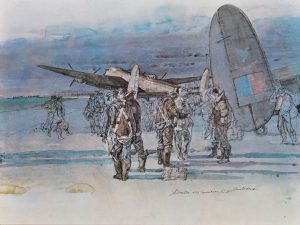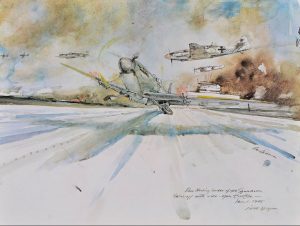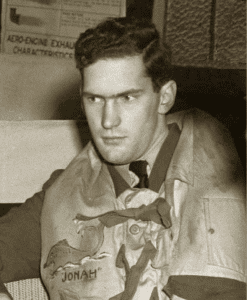 I had just completed my final public-speaking event of 2024. I had presented the same talk on my latest book nearly 70 times in three months, and that mid-December day I was looking forward to the holiday break.
I had just completed my final public-speaking event of 2024. I had presented the same talk on my latest book nearly 70 times in three months, and that mid-December day I was looking forward to the holiday break.
The best present, I thought, would be a few days’ rest over Christmas and New Year’s. I was wrong. As I packed up my laptop, one of the aviation enthusiasts in my audience said he had something to give me.
“Come on over to the officers’ mess,” he said. “It’s there.”
After a short, chilly walk across the outdoor parade square at the Canadian Forces College in North York, I caught up with the man who’d invited me. “You might find this of interest,” he said and handed me a cardboard portfolio with red, white and blue lettering on the cover; it read: “RCAF: The War Years … Commemorating 40th Anniversary Battle of Britain.” Inside sat 10 watercolours by Donald K. Anderson, an official war artist of the Second World War. I recognized Anderson’s name and reputation but had no idea what I was about to discover.
“Back in 1980, we organized an auction,” the gift-bearer told me. “Anderson donated the prints to help raise funds for our (Canadian Aviation Historical) Society. But this portfolio was never sold.”
“You sure you want to part with it?” I asked and he smiled, sensing I’d find something of value in it. I sifted through the 12-by-16-inch prints, each one brilliantly capturing wartime aviation moments of bomber and fighter aircraft, each one populated with air and ground crew whose stories I’ve been gathering for 50 years, and each one inscribed and autographed by Anderson in 1944-45 while he served overseas.
A graduate of Danforth Tech in Toronto, Anderson had enlisted in the RCAF in 1941. While he trained for aircrew, his superiors noted his artistic talent and assigned him to paint images at the initial training facility, including a landscape mural so that pilot trainees flying a Link simulator would see realistic countryside from the stationary cockpit.

Next, the Air Force moved him to public relations and in 1944 to Britain as an official war artist. His service consisted of depicting Canadian air and ground crew in action.
It suddenly occurred to me that Anderson’s painting of an RCAF bomber crew assembling at their Lancaster for a nighttime operation would be a perfect Christmas gift for my son-in-law, a former flying instructor. As I carried the portfolio into Framer’s Gallery in Port Perry, at the last minute I decided to frame another of Anderson’s paintings as a gift for myself.

I chose one showing a Spitfire struggling to get airborne from Evère airfield in Belgium in 1945 as several Messerschmitt fighters strafed the entire airbase. At the bottom of the painting, Anderson had written, “Dave Harling leader of (RCAF) 416 Squadron takes off with wide-open throttle – Jan. 1, 1945.”
As the framer measured the prints for mounting, matting and framing, I thought, “Since I’ve chosen this image of pilot Harling in combat, maybe I should find out why Anderson had chosen action on that day.”

On my phone, I found a Second World War fighter pilot website that included Harling’s story. He’d enlisted in Montreal in 1940, earned his wings that September; he’d then flown fighter aircraft with RCAF 416 Squadron during the Allied invasion of France and Belgium in 1944.
On Dec. 31, 1944, during Operation Bodenplatte, Hitler’s counteroffensive into the Ardennes, Harling had learned he’d been awarded a Distinguished Flying Cross; he’d shot down six enemy aircraft while stationed at Evère, Belgium.
I looked at the painting again; Anderson had dated the painting Jan. 1, 1945 – the very next day! I went back to the pilot profile; the last line read: “Killed in Action while attempting to take off from Evère, Belgium.” He was 23.
In other words, by coincidence, in the watercolour I’d chosen to frame as a gift to myself, painter Anderson had captured the last moments of S/L Harling’s life, trying to get his Spitfire aloft in the middle of a lightning German air attack. The artist had masterfully captured it all – the surprise attack, the desperate response and the deadly results.
But there was a final revelation. I suddenly remembered a wartime diary entry my own father had written that same winter. Dad knew that German offensive as the Battle of the Bulge, and that very same week of January 1945, Sgt. Alex Barris faced combat for the first time as a front-line U.S. Army medic. Mere kilometres from airman Harling’s last flight, my father got his baptism of fire in the very same battle.
Now I’m reminded of it each time I look at Don Anderson’s painting.